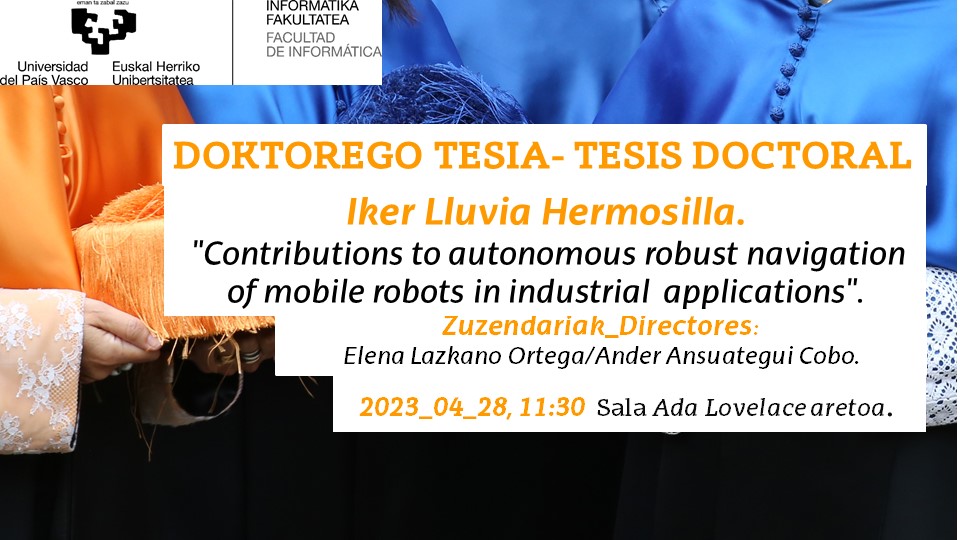2023-04-28; 11:30 DOKTOREGO TESI BATEN DEFENTSA IKER LLUVIA HERMOSILLA
Lehenengo argitaratze data: 2023/04/25

Iker Lluvia Hermosilla: "Contributions to autonomous robust navigation of mobile robots in industrial applications".
Zuzendariak_Directores: Elena Lazkano Ortega/Ander Ansuategui Cobo.
2023_04_28, 11:30 Sala Ada Lovelace aretoa.
Abstract:
"The number of scenarios in which mobile robots can be seen performing a wide range of tasks is increasing, being the most common transport, cleaning and rescue operations. For example, the media has recently shown how robots can disinfect schools and hospitals to prevent people from becoming infected with a certain virus and stop its spread. The functions that are perhaps most impressive are those for public assistance, but the number of applications for process automation in industry is much higher.
Among the capabilities that a mobile system can have, flexibility, security and robustness are probably the most demanded. On the one hand, whatever the purpose for which it is designed, a mobile platform must be able to adapt to the changes that an environment may undergo over time, or to the different casuistry that may occur in it on a day-to-day basis. In addition, it must avoid damaging the rest of the machinery and, especially, harming the people it shares the space with. On the other hand, of course, the mobile platform must perform the tasks assigned to it effectively and within a given time interval. Although significant progress has been made in this field in the last decades, there are still challenges that these systems have not been able to overcome.
One aspect where today's mobile platforms cannot compete with the level already achieved in industry is accuracy. The fourth industrial revolution brought with it the implementation of machinery in most industrial processes, and a clear strength of these is their repeatability. Autonomous mobile robots, which offer the greatest flexibility, lack this capability, as the most successful ones are based on probabilistic algorithms that depend on the perception of the environment. For this reason, a large part of the research work presented in this document focuses on quantifying the error committed by the main mapping and localisation methods, offering different alternatives for improving their positioning.
To perceive this environment around the robot, the main sources of information are exteroceptive sensors, which measure the surroundings and not so much the state of the robot itself. Because of this, some methods are very dependent on the scenario for which they have been developed, and do not obtain the same results when moving to a different scenario. Most mobile platforms generate a map that represents the environment, and use it for many of their calculations for actions such as, e.g., navigation. Map generation is a process that, in most cases, requires human intervention and has a great impact on the subsequent performance of the robot. In the last part of this research work, a method to optimise this step in order to generate a richer model of the environment without requiring additional time is proposed."


